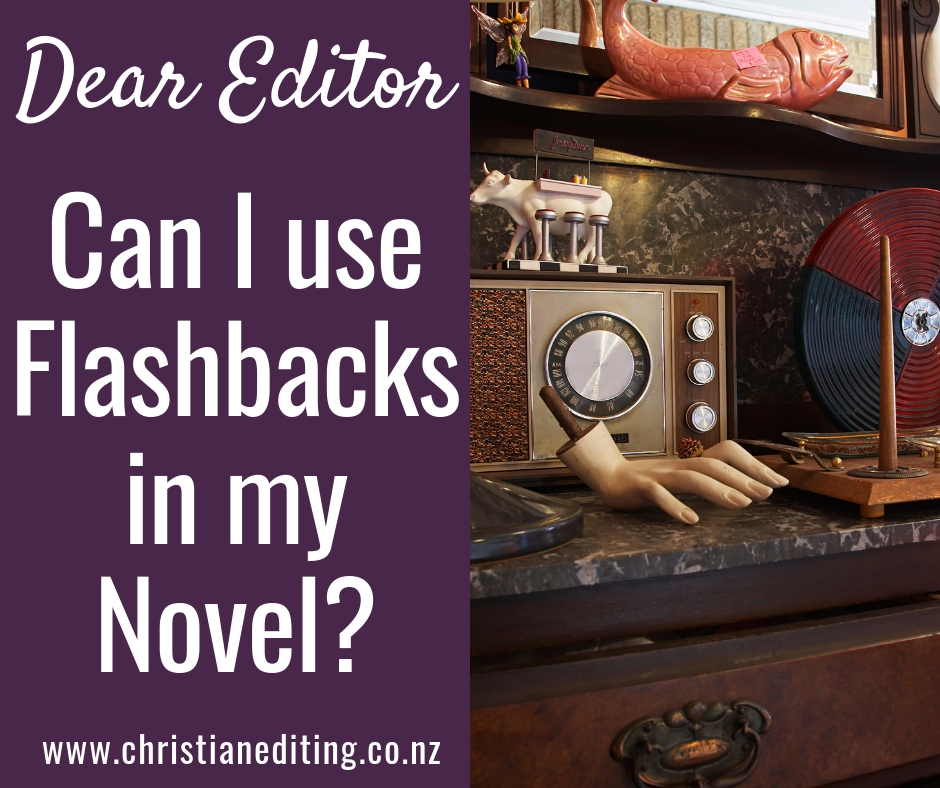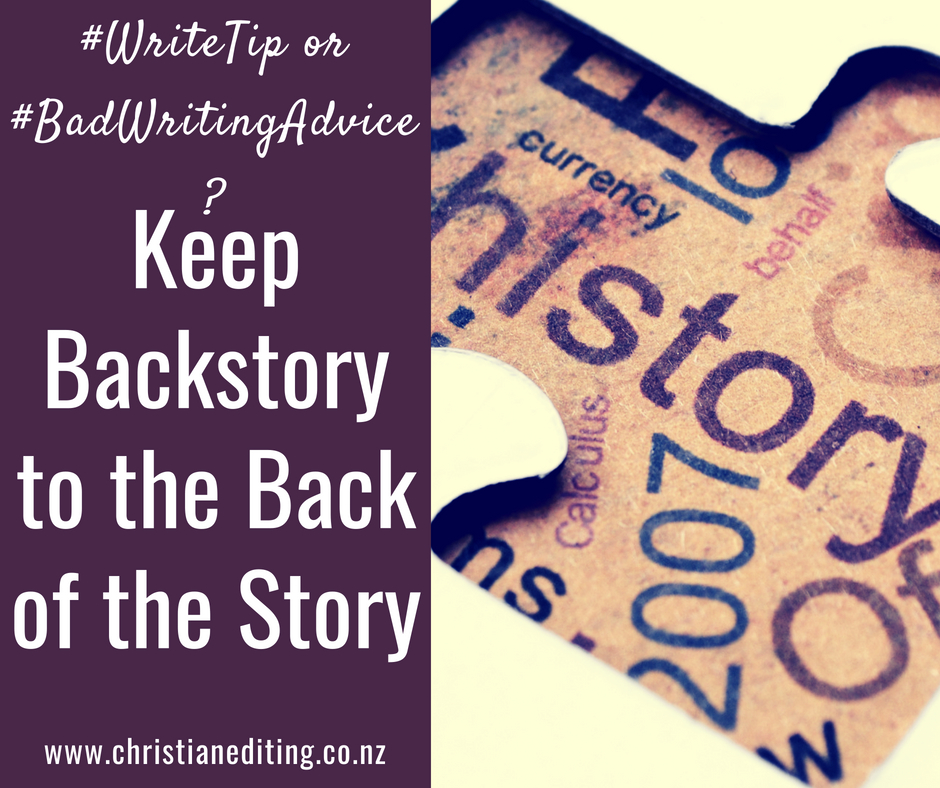I’ve recently worked on a couple of novels that used a lot of flashbacks to “show” the character backstory to the reader. This got me thinking: are flashbacks a good way of sharing backstory?
Should authors flashbacks?
I’ve talked about backstory before, about the need to keep backstory to the back of the story, or to marble it in to the present story. I’ve also talked about showing, not telling (and why it’s not a good idea), and how to identify telling.
Tip: sharing backstory is generally telling.
Some authors know this, so they use a flashback as a way of showing the character’s backstory. But flashbacks aren’t always the best approach either.
So can authors use flashbacks in their novels?
Sometimes.
But only when a flashback is the best way to share backstory. And only when that backstory needs to be shared.
In Characters, Emotion & Viewpoint, Nancy Kress gives two reasons you might consider including backstory:
- If the character history is so complex that the only way it can be portrayed is through backstory.
- If the backstory itself is so funny or eventful that it will fascinate readers.
In Story Genius, Lisa Cron recommends writing in full the key scenes which have turned your character into the person they are at the beginning of your story. I suspect this is one of the dangers of using the Story Genius method: writers are tempted to include these backstory scenes as flashbacks, because they have written them and because Lisa Cron says:
… many of these scenes will appear in snippets and flashbacks in the novel itself.
However, she also says the scenes themselves aren’t included in the final novel. Information from them might be, but the scenes themselves are not.
In Story Engineering, Larry Brooks points out the danger in the Story Genius approach:
There is a risk if you choose to craft a detailed backstory ahead of time. By writing and investing a lot of energy in a backstory, you’ll be tempted to use too much of it.
I think this is the trap many new authors fall into with flashbacks.
They’ve written the scenes and want to share the information. Scenes are showing, not telling, so it must be okay. Right? Wrong. Flashback scenes aren’t necessarily the best way of showing this information.
In Self-Editing for Fiction Writers, Renni Brown and Dave King say:
Flashbacks are not recommended, as it brings the story to a halt, which can make the present-time story hard to follow.
Valerie Parv agrees, in The Art of Romance Writing:
Flashbacks are risky. The essence of good storytelling is to make the reader want to know what happens next, so an excursion into the past can slow down the story.
Sol Stein asks the following questions about flashbacks:
- Does the flashback reinforce the story in an important way?
- Is it absolutely essential?
- Can the reader see what’s happening in your flashback?
- Is the opening immediately interesting or compelling?
- Is the reader’s experience of the story enhanced by the flashback?
- Has the flashback helped the reader feel what the character feels?
- Is there any way of getting the background information across without resorting to a flashback?
How do your flashbacks rate against Stein’s questions?
If your flashbacks fail Stein’s test, then you probably don’t need flashbacks. But you might still need to include some or all of that information, to provide your readers with the backstory they do need to know to best understand the present story.
Backstory, flashbacks, and back flashes: what are they, and which is right for your novel? #WriteTip #WritersLife Share on XIn Revision and Self-Editing for Publication, James Scott Bell talks about marbling backstory into the novel. He also suggests using a back flash rather than a flashback:
Back flashes are short burst in which you drop information about the past within a present moment scene. The two primary methods are dialogue and thoughts.
If you have to use flashbacks, then:
- Ensure the flashback is motivated by something in the present (e.g. going swimming could trigger a flashback about swimming as a child).
- End the flashback by coming back to the initial trigger.
- Ensure the flashback has a direct impact on the events in the present.
- Only use a flashback when you can’t use a back flash (i.e. marble in the backstory).
- Include the flashback as part of a sequel, not a scene. Scenes are about action, and even flashbacks which are shown, not told, are inaction—they are the character remembering a past event.
We expect scenes to have action. Interrupting an action scene to deliver a five-page flashback (however exciting) is as annoying as interrupting a scene to deliver a five-page info dump or five pages of barely relevant interior monologue.
Instead, include the flashback (or interior monologue) in a sequel, a quiet time where it’s believable that the character is reminiscing about past events and their effect on the present.
(If you’re not sure what I mean by scene and sequel, read Plot: Scene, Sequel and Summary).
Also, don’t begin with a flashback. Readers need to care about the character in the present before we can care about them in the past. The one exception to this is starting with a Prologue—in which case the question becomes whether you need a Prologue, or whether than information can better be shared as part of a scene or sequel.
Flashbacks can be perfectly good writing. But they must be used with care.
If they’re not necessary to move the story forward, then they should go. Remember, kill those darlings!




